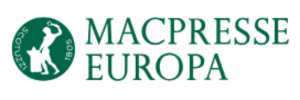The European Biomass Conference and Exhibition (EUBCE) è is the European leading conference in the biomass energy sector. Now in its 24th edition, the fair trade is world-famous thanks to the high profile of its scientific experts and plays an important bridging role between research and industrial application.
EUBCE is not only a strategic platform to collect, exchange and spread scientific know-how regarding biomass.
It also represents a benchmark for the international community committed to this matter, which will showcase the most important innovations and the latest developments of the sector.
1,500 participants from 76 countries and 50 exhibitors are expected. This fair trade is the perfect occasion to keep up-to-date about the latest technological news in the biomass energy sector and to establish new trade agreements.
We will be present, together with our agent Mutsaerts International to present our biomass and refuse derived fuel (RDF) balers and the new MAC/2 series, which is particularly suitable for the treatment of these materials.
Come visit us at Stand 14!
Our biomass balers: versatile, strong, efficient and easy to maintain
The MAC/1 and new MAC/2 series biomass balers are:
1. Versatile
They can treat different types of material: wood chips, rice hulls, bagasse, alfalfa, RDF and organic portion of municipal solid waste. New MAC/2 balers have larger load dimensions to assist entry of very voluminous materials.
2. Strong and wear resistant
One of the highlights of our balers is their strength which, together with their high wear resistance, enables baling even those materials that are particularly difficult to treat, such as wood chips.
3. Efficient and flexible
Our balers can treat great quantities of materials designed to produce energy from alternative sources, for example they can bale up to 30 ton/h of rice hulls and up to 20 ton/h of bagasse. Another important feature is the XL channel: longer extrusion channel (+1.5 m) for better bale density.
4. Multiple use
Each balers can not only bale different Bio Mass Crops but many balers are also used to “de-water” the high moisture content of organic fraction from for instance household collection, which result in a relatively dry baled product
Furthermore, they are equipped with a versatile electromechanical horizontal tying system unique in its strength and simplicity, designed to bale special materials which require flexible tying and able to adapt to their volumetric changes. This cutting-edge system allows to tie bales both with plastic wire and with iron wire (up to 5 iron wires). New MAC/2 balers tying system can reach +50% tying speed (cycle) and the cutting system has been redesigned for better bale integrity and lower energy consumption: -30%!
5. Safe and easy to maintain
As servicing and cleaning of the tying unit are made on the floor, the operator does not need to work below the baler to reset the wires.
Here you can see one of our baler while processing sugar cane bales:


